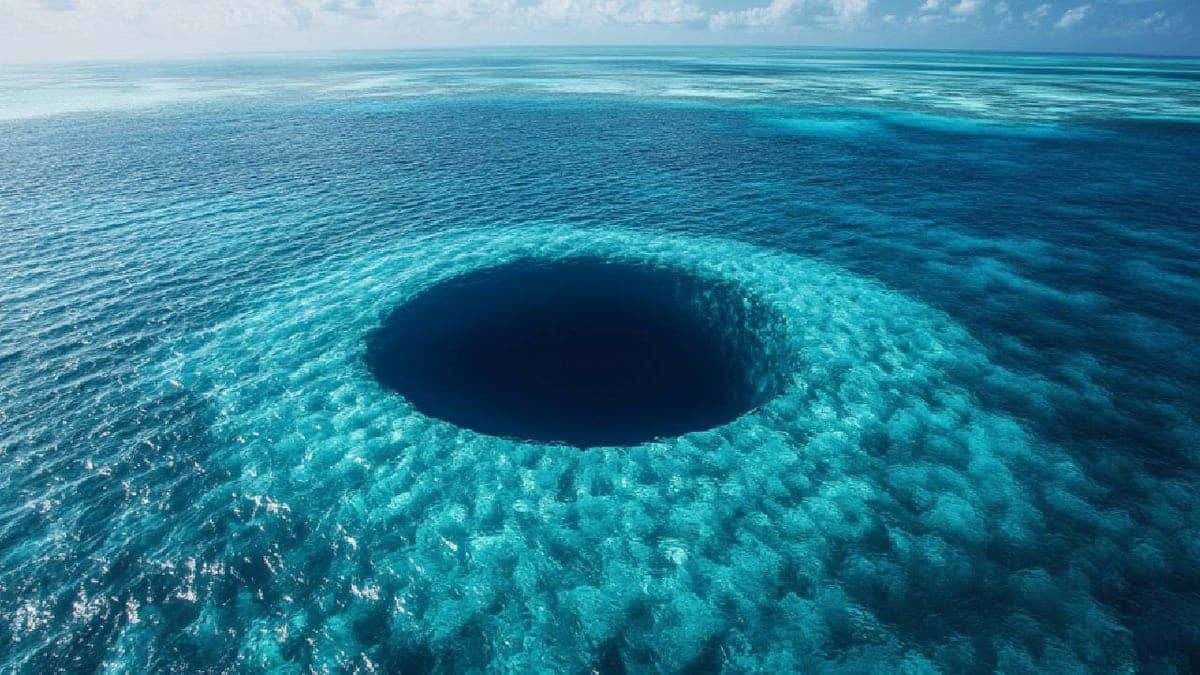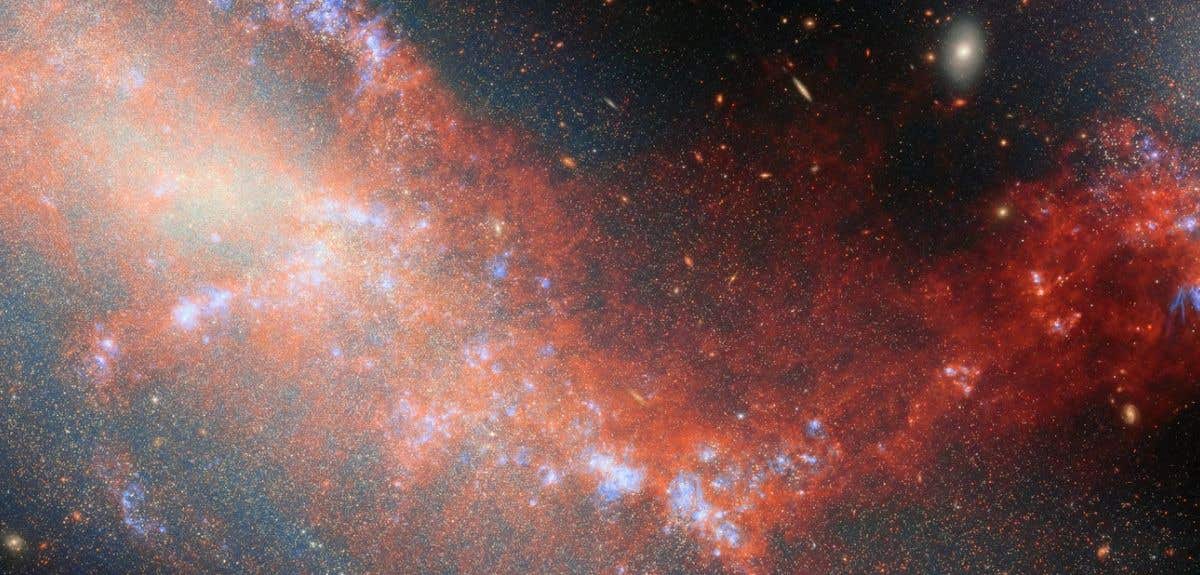Scientists solve the 75-year-old mystery of massive ‘gravity hole’ in the Indian Ocean
The Indian Ocean Geoid Low (IOGL) features an enormous dip in the ocean’s surface, dropping 106 meters lower than surrounding areas.

The Indian Ocean Geoid Low spans 1.2 million square miles where a deep gravity anomaly causes the sea surface to sink by as much as 106 meters. (CREDIT: AI generated via Midjourney)
The ground may feel steady underfoot, but the planet is always in motion. While satellites and sensors have mapped the surface in fine detail, what lies beneath remains largely unknown. The crust, a shell only 35 kilometers thick, is the farthest any probe has reached. To explore the deep interior—where the mantle and core reside—scientists must depend on indirect tools and modeling.
Seen from space, Earth looks smooth and round. But this view hides a bumpy truth. Beneath the surface, mass is not spread evenly. This unevenness alters gravity across the planet, warping its shape. Tectonic plates add to the drama, pushing mountains upward and opening deep valleys. These shifting forces change the Earth's form over time.
Even the oceans reflect this hidden turmoil. Covering over 70% of the surface, the sea might seem level, but it's not. If you removed all tides and currents, seawater would settle into an undulating surface shaped by gravity—known as the geoid. This invisible contour dips where gravity is weak and bulges where it’s strong. These dips and bulges, called geoid anomalies, reveal how the Earth's mass is arranged deep below.
One of the most extreme of these anomalies is the Indian Ocean Geoid Low (IOGL). Discovered in 1948 by Dutch geophysicist Felix Andries Vening Meinesz, it stretches across 1.2 million square miles. Here, the ocean surface sinks 106 meters lower than nearby areas. For decades, this massive gravitational dip puzzled scientists and remained one of Earth’s greatest unsolved mysteries.
According to Prof. Attreyee Ghosh, a geophysicist at the Centre for Earth Sciences, Indian Institute of Science, “The existence of the Indian Ocean geoid low is one of the most outstanding problems in Earth Sciences.” She emphasized, “It is the lowest geoid/gravity anomaly on Earth and so far no consensus existed regarding its source.”
To unlock the mystery, Prof. Ghosh teamed up with colleagues at the GFZ German Research Centre for Geosciences. Together, they used advanced tools and simulations to investigate. Their research, recently published in Geophysical Research Letters, offers a promising explanation rooted deep within the mantle.
Previous ideas focused on an ancient tectonic plate that had plunged into the mantle millions of years ago. While that theory made some sense, it didn’t fully explain the size and depth of the anomaly. The true cause remained elusive—until now.
By using numerical models powered by seismic tomography data, the research team identified mantle convection as the likely driver. This slow, swirling movement inside the Earth stirs hot, light material upward and pulls cold, heavy material downward. These massive flows shift the planet’s mass in a way that explains the Indian Ocean’s strange gravitational low for the first time with confidence.
Related Stories
The researchers discovered that 'low-density anomalies'—the presence of lighter materials in the upper to mid-mantle beneath the IOGL—caused the gravity low in this region. Mantle plumes, or rising abnormally hot rock, can result in low-density anomalies.
However, no known mantle plume exists beneath the IOGL. Instead, they found hot material rising from the African large low-shear-velocity province (LLSVP) or the African superplume, near the IOGL, which gets deflected eastward and terminates beneath the IOGL. The deflection is possibly due to the fast motion of the Indian plate.
The researchers used supercomputers to simulate how the area could have formed, going as far back as 140 million years. "The Earth is basically a lumpy potato," said Ghosh. “Technically, it’s not a sphere, but what we call an ellipsoid, because as the planet rotates, the middle part bulges outward.”
To find a potential answer, Ghosh and her colleagues used computer models to set the clock back 140 million years in order to see the big picture, geologically. "We have some information and some confidence about what the Earth looked like back then,” she said. “The continents and the oceans were in very different places, and the density structure was also very different.”
From that starting point, the team ran 19 simulations up to the present day, recreating the shifting of tectonic plates and the behavior of magma inside the mantle. In six scenarios, a geoid low similar to the one in the Indian Ocean formed. The distinguishing factor in all six models was the presence of plumes of magma around the geoid low, believed to be responsible for the formation of the "gravity hole."
The plumes themselves originated from the disappearance of an ancient ocean as India's landmass drifted and eventually collided with Asia tens of millions of years ago. "India was in a very different place 140 million years ago, and there was an ocean between the Indian plate and Asia. India started moving north and as it did, the ocean disappeared, and the gap with Asia closed," Ghosh explained.
As the oceanic plate went down inside the mantle, it could have spurred the formation of the plumes, bringing low-density material closer to Earth's surface.
“A geoid low or a negative geoid anomaly would be caused by a mass deficit within the deep mantle. Our study explains this low with hotter, lighter material stretching from a depth of 300 km up to ~900 km in the northern Indian Ocean, most likely stemming from the African superplume,” says Prof. Ghosh.
The geoid low formed around 20 million years ago, according to the team's calculation. It’s hard to say whether it will ever disappear or shift away. "That all depends on how these mass anomalies in the Earth move around," Ghosh said. "It could be that it persists for a very long time. But it could also be that the plate movements will act in such a way to make it disappear — a few hundreds of millions of years in the future."
Dr. Alessandro Forte, a professor of geology at the University of Florida, believes there is good reason to carry out computer simulations to determine the origin of the Indian Ocean geoid low. However, Forte identified a couple of flaws in the study’s execution.
“The most outstanding problem with the modeling strategy adopted by the authors is that it completely fails to reproduce the powerful mantle dynamic plume that erupted 65 million years ago under the present-day location of Réunion Island,” he said. "The eruption of lava flows that covered half of the Indian subcontinent at this time — producing the celebrated Deccan Traps, one of the largest volcanic features on Earth — have long been attributed to a powerful mantle plume that is completely absent from the model simulation.”
Another issue, Forte added, is the difference between the geoid, or surface shape, predicted by the computer simulation and the actual one: “These differences are especially noticeable in the Pacific Ocean, Africa, and Eurasia. The authors mention that there is a moderate correlation, around 80%, between the predicted and observed geoids, but they don’t provide a more precise measure of how well they match numerically (in the study). This mismatch suggests that there may be some deficiencies in the computer simulation.”
Ghosh acknowledged that not every possible factor can be accounted for in the simulations. "That’s because we do not know with absolute precision what the Earth looked like in the past. The farther back in time you go, the less confidence there is in the models. We cannot take into account each and every possible scenario, and we also have to accept the fact that there may be some discrepancies on how the plates moved over time,” she said. “But we believe the overall reason for this low is quite clear.”
This study is a significant step in understanding the IOGL, providing a credible explanation for one of Earth's most intriguing gravitational anomalies. Future research will continue to refine these models and explore the complex dynamics of Earth's interior.
Note: Materials provided above by The Brighter Side of News. Content may be edited for style and length.
Like these kind of feel good stories? Get The Brighter Side of News' newsletter.



